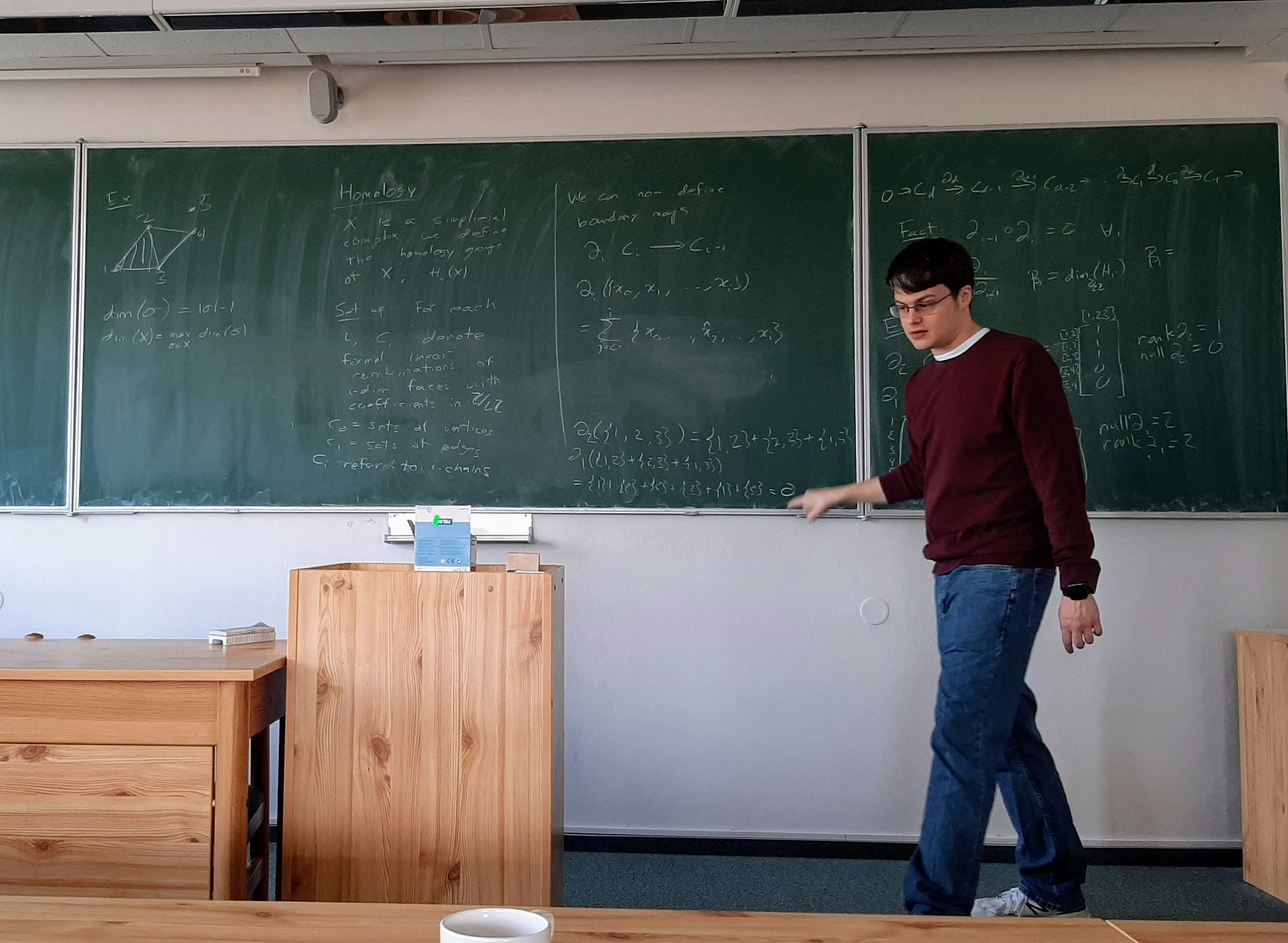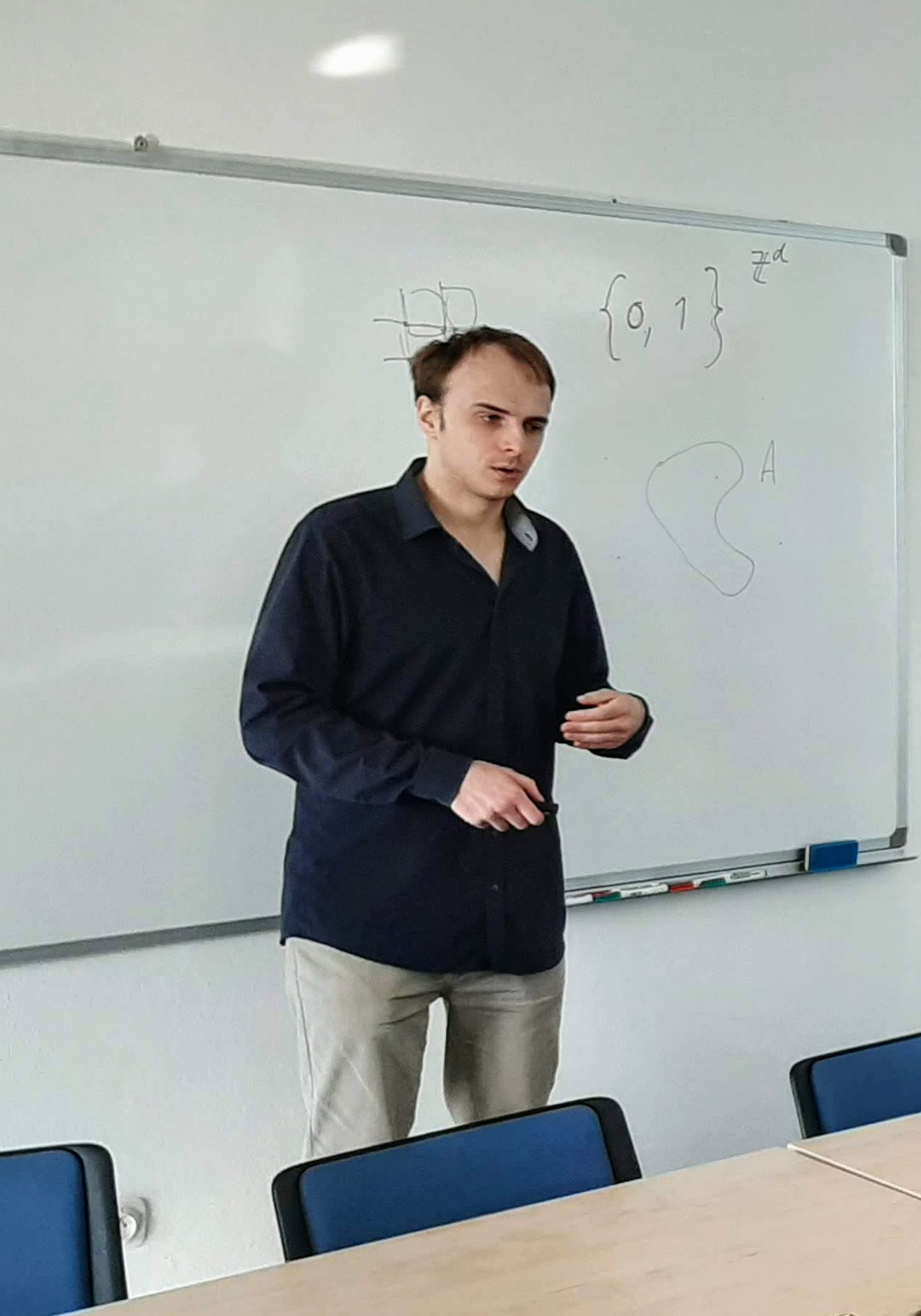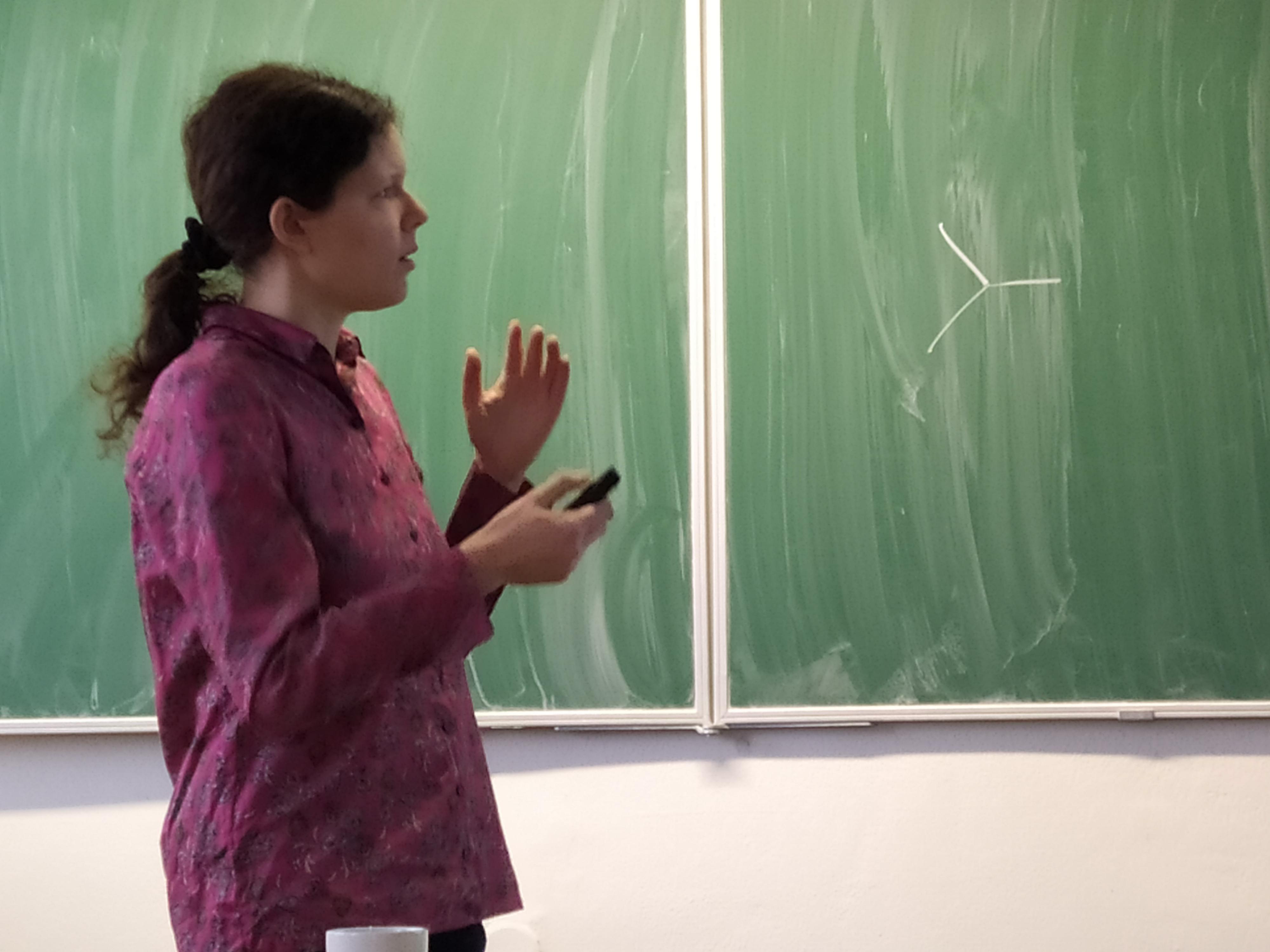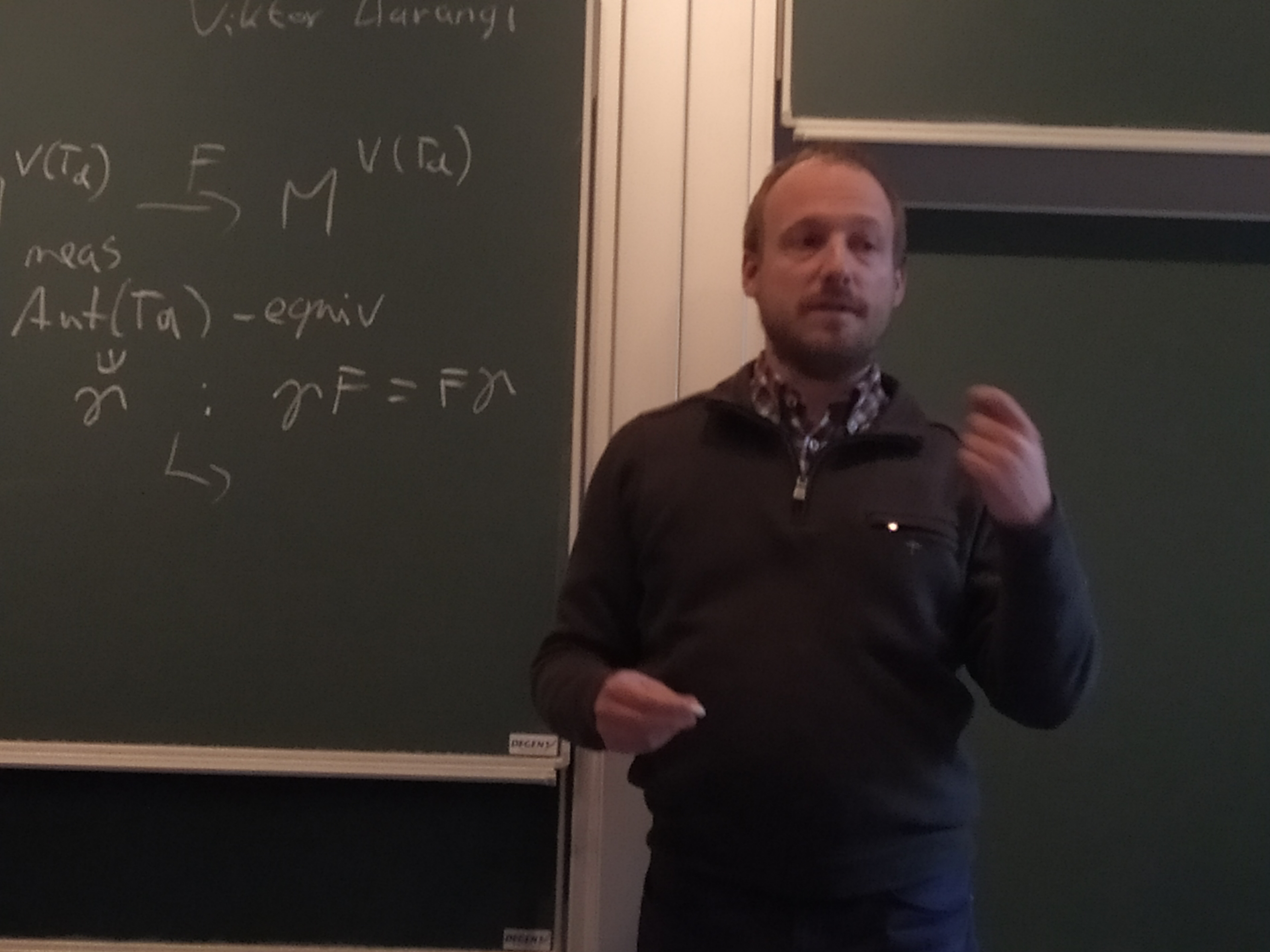Combinatorial group
Seminars in 2020
Since April 2021, the seminar was replaced by a webinar, see webpage of the webinar
Wednesday 12.2.2020 at 10:00 ICS, room 318, Andrew Newman (Technische Universität Berlin): Connectivity of random simplicial complexes

|
Abstract: In this talk we look at a higher-dimensional generalization
of the Erdős--Rényi random graph model to random simplicial complexes,
namely the Linial--Meshulam model. In this high-dimensional setting
there will often be many nonequivalent ways to topologically
generalize common graph properties. Several of these will be surveyed
and then new work will be discussed establishing an anticollapsibility
threshold in the Linial--Meshulam model as a generalization of path
connectivity of random graphs. This work is motivated by questions
about high-dimensional trees. This talk will assume familiarity with
random graphs but all relevant topological notions will be defined.
This is joint work with Davide Lofano.
|
Tuesday 11.2.2020 at 10:00 ICS, room 419, Viktor Bezborodov (Wrocław University of Science and Technology): Stochastic growth models: asymptotic shape and growth rate

|
Abstract: In this talk we discuss the asymptotic shape and the spread
rate for growing stochastic particle systems. We start with the
classical models and results and then proceed to discuss more recent
developments. We will highlight the differences between discrete-space
and continuous-space models. We will also briefly discuss computer
simulations.
|
Friday 24.1.2020 at 10:00 ICS, room 318, Tereza Klimošová (Charles University): Decomposing graphs into paths and trees

|
Abstract: Bensmail, Harutyunyan, Le and Thomassé conjectured that for a fixed tree T, the edge set of any graph G of size divisible by size of T
with sufficiently high degree can be decomposed into disjoint copies of T, provided that G is sufficiently highly connected in terms of maximal degree of T.
They proved the conjecture for trees of maximal degree 2 (i.e., paths). In particular, they showed that in the case of paths, the conjecture holds for 24-edge-connected graphs.
We improve this result showing that 3-edge-connectivity suffices, which is best possible. We disprove the conjecture for trees of maximum degree greater than two, prove the conjecture for certain forests and prove a relaxed version of the conjecture that concerns decomposing the edge set of a graph into disjoint copies of two fixed trees of coprime sizes.
Joint work with S. Thomassé.
|
Friday 17.1.2020 at 10:00 at 10:00 MI, room modrá posluchárna, Balázs Gerencsér (Hungarian Academy of Sciences): Decay of mutual information for factor of iid processes on the d-regular tree

|
Abstract: We review the concept of factor of iid processes that allows to capture the behavior of local algorithms on large networks.
We investigate how much a global decision can or cannot be made using these processes. In particular, how much independent the output values need to be at far away vertices when applied on the limit case of the d-regular infinite tree.
Joint work with Viktor Harangi.
|



